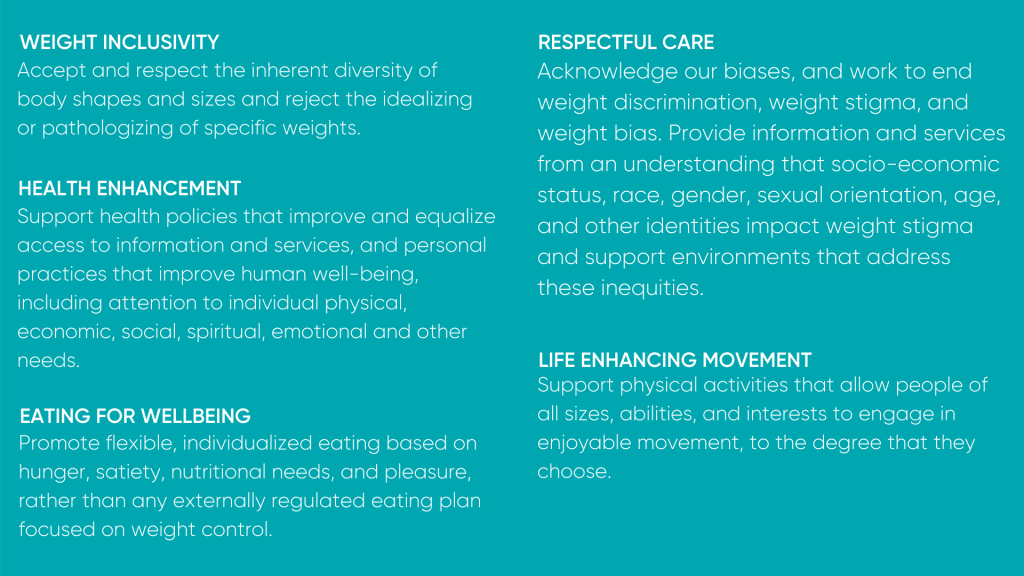Different Interpretations
One difficulty with Health at Every Size is that advocates and critics alike seem to differ in their interpretation and perceived purpose of the movement, leading to inconsistencies in the discourse that surrounds it.
On one hand, there are those who may see the Health at Every Size movement as a way to justify their personal political views. For example, those who view society as actively discriminating and oppressing overweight people in order to maintain certain power dynamics. There is often a radical scepticism of scientific evidence (obesity data for example) in favour of one’s “lived experience” associated with this view. Marylin Wann (weight diversity speaker and author of FAT!SO?), for example, asserts;
“Every person who lives in a fat hating culture, inevitably absorbs anti-fat beliefs, assumptions and stereotypes and inevitably comes to occupy a position in relation to power arrangements that are based on weight. None of us can ever hope to be completely free of such training or completely disentangled from the power grid.”
Other advocates, however, don’t entirely dismiss scientific consensus but do question certain biases and assumptions. They may agree, for example, that obesity is problematic to health, but argue that this is only true in extreme cases and question the extent to which fat itself is the problem. They may also think that the significance of being overweight is overstated and the alarmist reaction invoked by the “obesity epidemic” is ineffective and problematic. They also challenge the efficacy of the current weight-management paradigm. Lindo Bacon, the author of Health at Every Size (The Surprising Truth About your Weight), writes;
“Fat isn’t the problem. Dieting is the problem. A society that rejects anyone whose body shape or size doesn’t match an impossible ideal is the problem. A medical establishment that equates “thin” with “healthy” is the problem.”
Many health and fitness professionals are now trying to integrate Health at Every Size principles into their everyday practice. This point of view is nicely summarised in the tag line; Science fortified with compassion, coined by health coach Dr Gabrielle Fundaro. In her Bridging the Gap Series, she states;
“Many people have strong opinions about Health at Every Size (HAES), Intuitive Eating, weight neutrality, anti-diet culture, and body positivity, often despite having read none of the books or literature. Let me be clear: I have seen misinformed, extremist voices yelling from both sides of this divide.”
And;
“Contrary to popular belief, HAES does not state that health is present at every size; rather, the central tenant of the paradigm is simply that a person’s size should not prevent them from engaging in health-seeking behavior. They accurately assert that weight is not predictive of health status and focus on health-seeking behaviors rather than outcomes (such as weight loss).”
For an in-depth discussion of the application of Health at Every Size within an evidence-based framework, we highly recommend reading Dr Gabrielle’s series (part 1 and part 2) on the Renaissance Periodisation website.
 Common Purpose Team
Common Purpose Team







